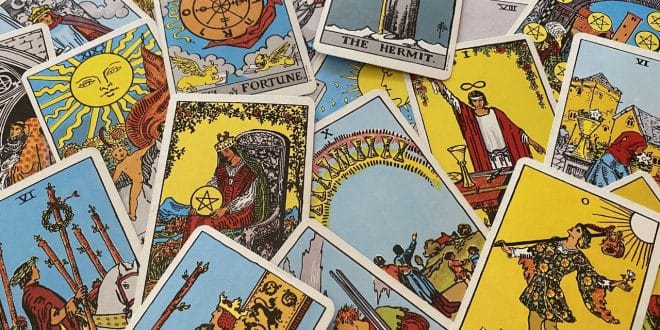Tarot is a powerful tool for self-discovery, clarity, and guidance. However, one of the most common questions people have—especially those new to tarot—is, “How often should I read tarot cards?” The answer depends on your goals, needs, and energy levels. Just like meditation or journaling, tarot works best when used with intention and balance.
In this article, we’ll explore the benefits of regular tarot practice, how to avoid tarot burnout, and tips to create a schedule that feels aligned with your life.
Factors to Consider When Deciding How Often to Read Tarot
Tarot is a highly personal practice, so the right frequency will depend on your situation. Here are a few things to consider:
1. What’s Your Purpose for Reading Tarot?
Your reason for using tarot will influence how often you read.
- Daily Reflection: Some people pull a single card each day for guidance or self-reflection. This helps them stay grounded and focused on their emotional or spiritual growth.
- Decision-Making: If you’re facing a specific challenge (e.g., a career decision or relationship issue), you might read more frequently during that period for extra clarity.
- Deep Spiritual Work: If you’re using tarot to explore personal growth or long-term goals, weekly or monthly readings may give you time to reflect and process the guidance fully.
Example: If you’re starting a new job, you might do a weekly spread to track your progress and challenges, rather than reading daily.
2. Are You Feeling Overwhelmed or Burned Out?
While tarot can be a source of support, reading too frequently—especially on the same topic—can lead to confusion and overwhelm. You may start to overanalyze the cards or receive mixed messages, which can make you feel more anxious than empowered.
If this happens, take a step back and give yourself time to reflect on previous readings before pulling more cards. Remember that tarot works best when used with clarity and intention.
3. Are You Giving the Cards Time to Work?
After a reading, it’s important to apply the guidance you’ve received. If you’re pulling cards too often without acting on the advice, you may get stuck in a loop of seeking answers without making progress.
Give yourself time to reflect and take action on the messages from your readings. This might mean waiting a few days or weeks between readings, especially if you’re asking about major life changes.
How Often Should You Do Different Types of Tarot Readings?
Here’s a guide to how frequently you might consider different types of tarot readings, based on your needs.
1. Daily Card Pulls – For Reflection and Focus
Pulling one card a day can help you connect with your intuition and set an intention for the day. This is a simple practice that doesn’t require much time but can provide powerful insights.
Benefits:
- Helps you develop a consistent tarot practice.
- Offers daily reminders to stay mindful and centered.
- Encourages reflection on your emotions and experiences.
Tip: Keep a tarot journal to record your daily pulls. Over time, you may notice patterns that reveal deeper insights.
2. Weekly or Biweekly Readings – For Short-Term Guidance
A weekly or biweekly reading can help you stay focused on goals, projects, or relationships. This allows you to track your progress and make adjustments as needed.
Benefits:
- Provides a balance between guidance and reflection.
- Gives you time to act on the advice from previous readings.
- Helps you identify recurring themes or patterns in your life.
Example Spread:
- Card 1: What should I focus on this week?
- Card 2: What challenges might arise?
- Card 3: How can I best support myself?
3. Monthly or New Moon Readings – For Long-Term Growth
Monthly readings are ideal for setting intentions and gaining insight into big-picture goals. Many people also align their readings with lunar cycles, such as the new moon (for setting intentions) and full moon (for releasing what no longer serves them).
Benefits:
- Helps you stay aligned with your long-term vision.
- Encourages self-reflection and personal development.
- Provides a sense of ritual and connection to natural cycles.
Example: At the beginning of each month, you might ask, “What energy will guide me this month?” or “What opportunities should I focus on?”
4. Readings for Major Decisions – As Needed
When facing a big decision, tarot can help you explore your options and gain clarity. However, it’s important to approach these readings with a clear mind and open heart.
Tip: Avoid asking the same question repeatedly, especially within a short time frame. Instead, ask follow-up questions to dig deeper into the guidance you’ve already received.
Example: If you’re considering a career change, your first reading might focus on your current situation. A follow-up reading could explore possible outcomes of different choices.
How to Avoid Tarot Burnout
It’s easy to fall into the habit of reading tarot too often, especially when you’re feeling anxious or uncertain. Here are some tips to maintain a healthy, sustainable tarot practice:
1. Set Clear Intentions for Each Reading
Before you draw any cards, take a moment to set an intention. Ask yourself, “What do I truly want guidance on today?” This helps you stay focused and avoid repetitive or unfocused readings.
2. Take Breaks When Needed
If you feel emotionally drained or confused by your readings, it’s okay to step away from the cards for a while. Tarot is a tool, not a crutch. Give yourself time to reflect and reset before returning to your practice.
3. Trust the Timing of the Cards
Sometimes, the guidance you receive doesn’t make sense right away. Trust that the messages will reveal their meaning in time. Instead of immediately seeking another reading, allow space for insights to unfold naturally.
4. Keep a Tarot Journal
Documenting your readings helps you track patterns, reflect on past guidance, and see how your interpretations evolve over time. This can build confidence in your intuition and reduce the urge to seek constant reassurance.
Combining Tarot with Other Self-Care Practices
Tarot works beautifully alongside other self-care and spiritual practices, such as:
- Meditation: Use tarot to focus your meditation on specific themes, such as peace or courage.
- Journaling: Write about your tarot readings to deepen your understanding of the messages.
- Rituals: Incorporate tarot into new moon or full moon rituals to align with natural cycles.
There’s no right or wrong answer to how often you should read tarot—it’s all about finding a rhythm that supports your growth, healing, and intuition. Whether you prefer daily card pulls, weekly spreads, or monthly check-ins, the key is to approach tarot with intention and self-compassion.
Remember, tarot isn’t just about getting answers—it’s about building a relationship with yourself and your inner wisdom.
How often do you read tarot? Share your favorite tarot routines and spreads in the comments below!
 Lifeved The Keys to a Better
Lifeved The Keys to a Better



 by
by